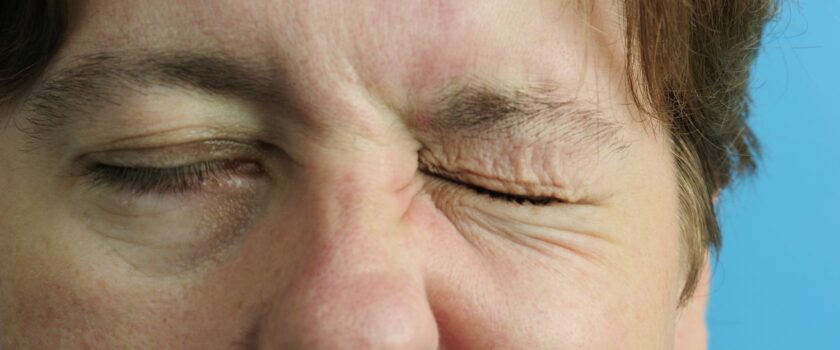
Bell’s Palsy
Bell’s Palsy, commonly known as facial paralysis, is due to the peripheral involvement of the 7th cranial nerve on one side of the face, resulting in weakness or paralysis of the muscles in that area. Possible causes include vascular ischemia, viral diseases (herpes simplex, herpes zoster), autoimmune diseases, or a combination. It induces pressure paralysis wherein the ischemic necrosis of the facial nerve causes the face to be distorted, increased lacrimation, painful sensations in the face, behind the ear, and in the eye, speech difficulties, and inability to eat on one side.
Nursing Diagnoses
Body image disturbance related to alteration in structure and function for vision secondary to Bell’s Palsy
Desired outcomes
- Within 1 hour of nursing interventions, the patient will be able to demonstrate increased self esteem and body image by the ability to acknowledge, touch, and look at altered body part.
Nursing interventions
| INTERVENTION | RATIONALE |
| Assess patients knowledge of change in structure or function of the body part. | The level of response is related to the perceived value or importance that the patient places on the affected body part. |
| Assist patient to identify actual changes | Patients may perceive changes that are not actually present. |
| Encourage verbalization about concerns of the disease process and future expectations. | This provides an opportunity to identify fears/misconceptions and deal with them directly. |
Disturbed sensory perception: visual
Desired outcomes
- Within 1 hour of nursing interventions, patient will remain free from harm resulting from visual disturbances.
Nursing interventions
| INTERVENTION | RATIONALE |
| Assess patients’ knowledge of change in structure or function of the body part. | The level of response is related to the perceived value or importance that the patient places on the affected body part. |
| Assist patient to identify actual changes | Patients may perceive changes that are not actually present. |
| Encourage verbalization about concerns of the disease process and future expectations. | This provides an opportunity to identify fears/misconceptions and deal with them directly. |
Nursing Notes
Medical management
- The objectives of management are to maintain facial muscle tone and to prevent or minimize denervation.
- Corticosteroid therapy (prednisone) may be initiated to reduce inflammation and edema, which reduces vascular compression and permits restoration of blood circulation to the nerve.
- Early administration of corticosteroids appears to diminish severity, relieve pain, and minimize denervation.
- Facial pain is controlled with analgesic agents or heat applied to the involved side of the face.
- Additional modalities may include electrical stimulation applied to the face to prevent muscle atrophy, or surgical exploration of the facial nerve.
- Surgery may be performed if a tumor is suspected, for surgical decompression of the facial nerve, and for surgical rehabilitation of a paralyzed face.
Nursing management
Patients need reassurance that a stroke has not occurred and that spontaneous recovery occurs within 3 to 5 weeks in most patients. Teaching patients with Bell’s palsy to care for themselves at home is an important nursing priority.
Teaching eye care
Because the eye usually does not close completely, the blink reflex is diminished, so the eye is vulnerable to injury from dust and foreign particles. Corneal irritation and ulceration may occur. Distortion of the lower lid alters the proper drainage of tears. Key teaching points include the following:
- Cover the eye with a protective shield at night.
- Apply eye ointment to keep eyelids closed during sleep.
- Close the paralyzed eyelid manually before going to sleep.
- Wear wraparound sunglasses or goggles to decrease normal evaporation from the eye.
Teaching about maintaining muscle tone
- Show patient how to perform facial massage with gentle
- upward motion several times daily when the patient can tolerate the massage.
- Demonstrate facial exercises, such as wrinkling the forehead,
- blowing out the cheeks, and whistling, in an effort to prevent muscle atrophy.
- Instruct patient to avoid exposing the face to cold and drafts
